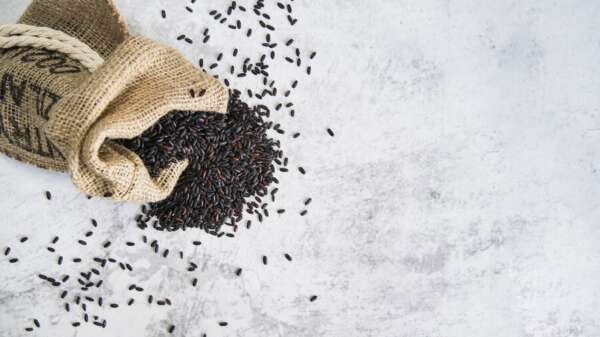Chikungunya Virus & Chikungunya Fever
Chikungunya (often just called chikungunya virus) is a mosquito-borne viral infection marked by abrupt high fever and debilitating joint pain. Transmitted by Aedes aegypti and Aedes albopictus, the infection can cause a distinctive stooped posture due to severe arthralgia—captured by its Kimakonde name, meaning “that which bends up.” First identified in Tanzania in 1952, the virus has since spread to more than 110 countries, including India, where periodic outbreaks have become endemic in most states.
You need to know about chikungunya because early 2025 saw a significant resurgence. The WHO issued global warnings as outbreaks raged across the Indian Ocean region, India, Europe, and Asia. In India alone, states like Maharashtra, Rajasthan, and West Bengal reported rising cases. While most recover quickly, persistent joint pain can affect work and quality of life for months or even years. Understanding symptoms, prevention, and limited vaccine availability is crucial.
When and Where is Chikungunya Spreading?
When did the current outbreak begin? A major wave started in early 2025 with large-scale outbreaks in La Réunion, Mayotte, and Mauritius—infecting nearly one-third of La Réunion’s population. It has since expanded into Madagascar, Somalia, Kenya, Southeast Asia, and reached India.
Where in India is chikungunya rising? Surveillance data from the National Centre for Vector Borne Diseases Control (NCVBDC) shows confirmed cases in Maharashtra, Rajasthan, Telangana, and Tamil Nadu. Mumbai alone saw a 500% spike in July 2025—cases jumped from 21 to 129. Rajasthan reported 184 cases in one campaign. Authorities in Rajasthan and Nagpur have launched door-to-door vector control programs.
These outbreaks coincide with early or prolonged monsoon rains, creating perfect breeding conditions for Aedes mosquitoes. Public health alerts have been issued across India’s high-risk zones, and WHO warns that 5.6 billion people in 119 countries now live in vulnerable regions.
Who is at Risk and Why?
Who is most affected by chikungunya? Anyone bitten by infected Aedes mosquitoes is at risk, but severity is higher among the elderly, infants, and people with pre-existing health conditions. Immunocompromised or pregnant individuals face greater risk of complications. World Health Organization
Why is 2025 especially concerning? Factors such as climate change, urban overcrowding, poor sanitation, and waning population immunity converge to fuel transmission. The absence of widespread immunity and limited vaccine supply exacerbate the risk. Global travel and interconnectedness also accelerate spread. theweek.indnalabsindia.com
India’s growing dengue and chikungunya case overlap strains health infrastructure, especially post-monsoon. Cities undergoing rapid urbanization and poor vector control see frequent outbreaks. WHO cites these conditions as central to the virus’s resurgence.
Important Facts About Chikungunya
- Chikungunya virus (CHIKV) is an arbovirus from the Togaviridae family, transmitted primarily by Aedes aegypti and Aedes albopictus.
- After an incubation period of 2–12 days (usually 3–7), symptoms begin with high fever and severe joint pain, often symmetric across wrists and ankles.
- Most recover within a week, but 87–98% develop lingering joint pain, sometimes lasting months or years.
- Severe cases (rare) may involve neurological symptoms, myocarditis, ocular complications, or Guillain-Barré syndrome.
- There is no specific antiviral treatment; management includes rest, hydration, and over-the-counter pain relievers like acetaminophen.
- Two vaccines—Ixchiq (approved 2023) and Vimkunya (approved early 2025)—exist but supply is limited. Use has been paused in older adults due to safety concerns.
- Prevention focuses on mosquito control: eliminating standing water, using repellents, wearing protective clothing, and adding screens/nets.
- Global risk expanded rapidly in 2025—WHO estimates 5.6 billion people in 119 countries at risk.
FAQs – Chikungunya
Q1: What is chikungunya?
A: Chikungunya is a viral illness that causes sudden fever and severe joint pain, transmitted via Aedes mosquito bites.
Q2: What are the main symptoms?
A: High fever, intense joint pain, fatigue, headache, rash, and sometimes nausea. Joint pain may persist for weeks to years.
Q3: Is there a vaccine or treatment?
A: Two vaccines are approved, but supply is limited and use is restricted in older adults due to safety concerns. No specific antiviral exists. Symptomatic relief is recommended.
Q4: What prevention steps can I take?
A: Use EPA-approved repellents, remove stagnant water, wear long sleeves, sleep under nets, and support local vector control efforts.
Q5: Where are chikungunya outbreaks happening?
A: Outbreaks in India, Indian Ocean islands, parts of Africa, Southeast Asia, and Southern China. Surveillance continues globally.
Conclusion – Chikungunya
The resurgence of the chikungunya virus in 2025 highlights a serious global health threat. With millions of cases across over 100 countries, including major outbreaks in India, WHO warns that billions remain vulnerable due to warming climates, urban crowding, and lack of herd immunity. While death is rare, the disease can cause long-lasting joint pain and reduced quality of life—especially for older adults and those with prior health conditions. theweek.inThe Yucatan Times
India has already witnessed dramatic spikes: cities like Mumbai, Rajasthan, Telangana, and Maharashtra have reported hundreds of cases, prompting state-level anti-vector and awareness campaigns. Early monsoon rains, stagnant water, and dense populations create fertile conditions for Aedes mosquitoes, demanding year-round vigilance from public health agencies.
Though two vaccines (Ixchiq and Vimkunya) now exist, supply remains limited and older adults face usage restrictions following safety reviews. Until wider availability, prevention through mosquito bite avoidance remains the primary defense. Recognizing symptoms early and seeking medical evaluation—especially in vulnerable individuals—is key.
In summary, chikungunya is re-emerging as a global concern. While not often fatal, its potential for chronic disability makes it a priority for surveillance, clinical awareness, and preventive action. Communities and individuals must work together to prevent this mosquito-borne menace from becoming yet another global epidemic.


